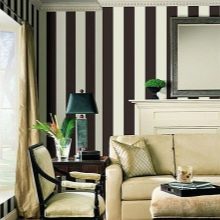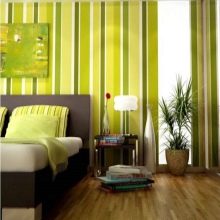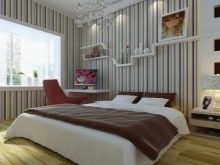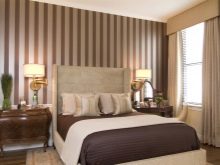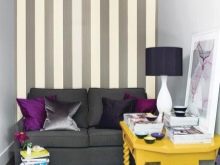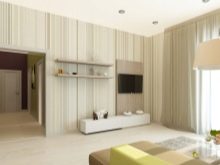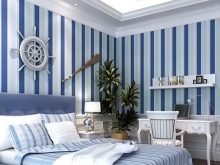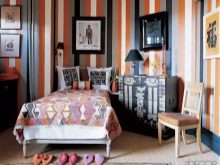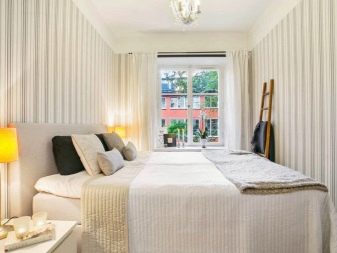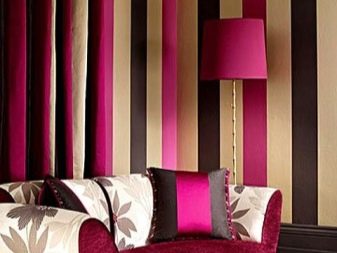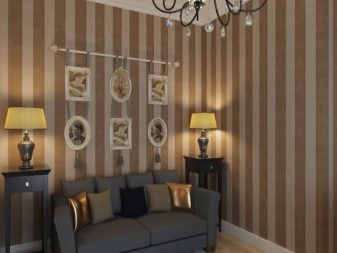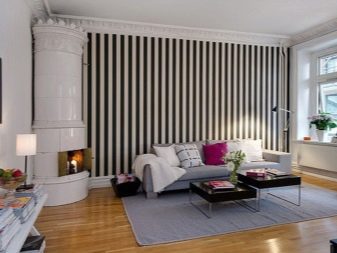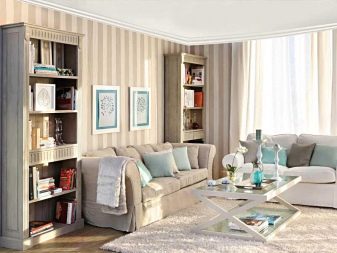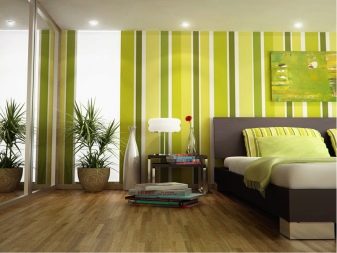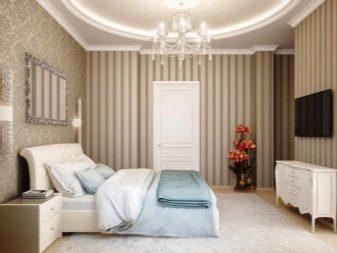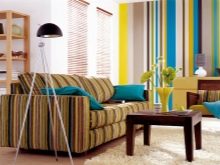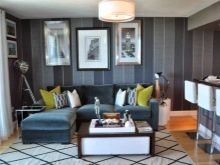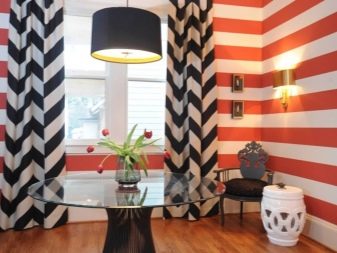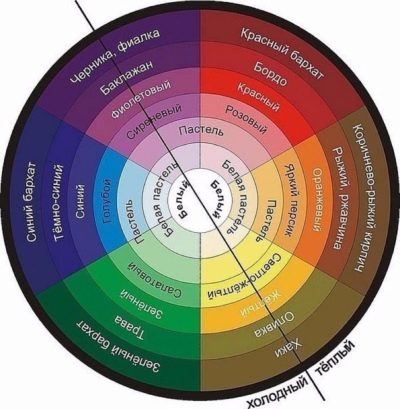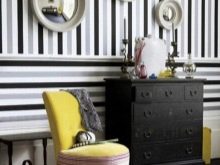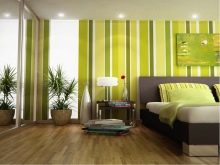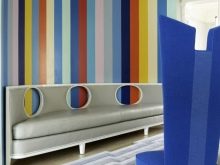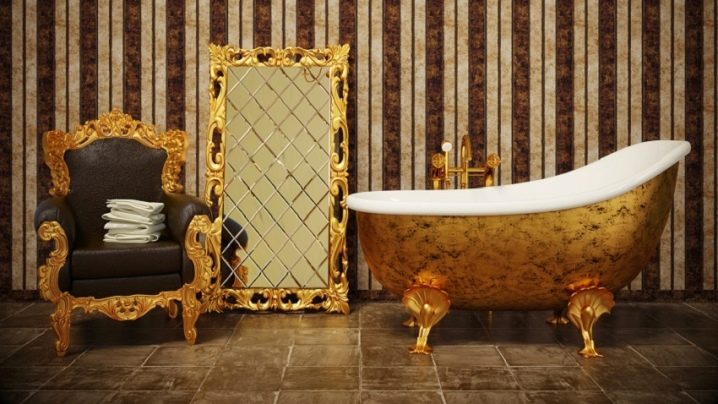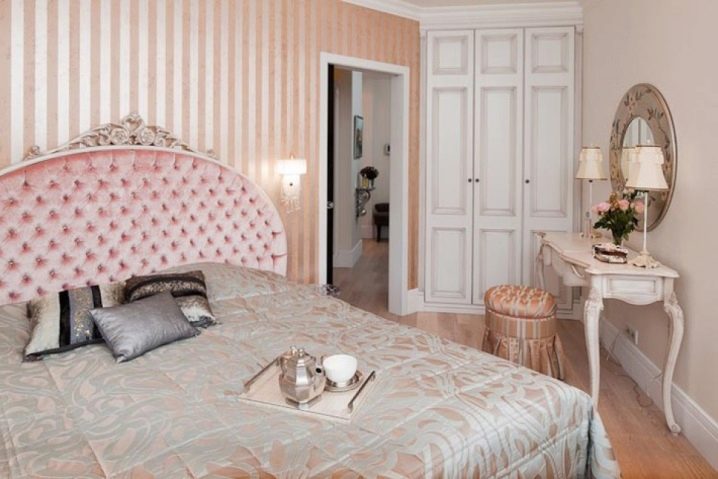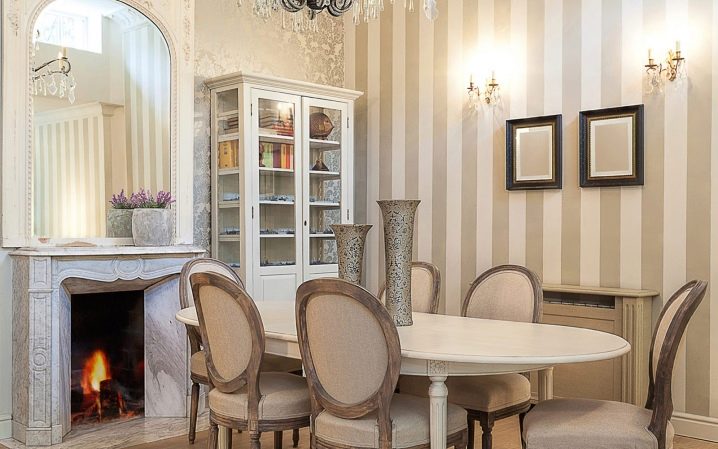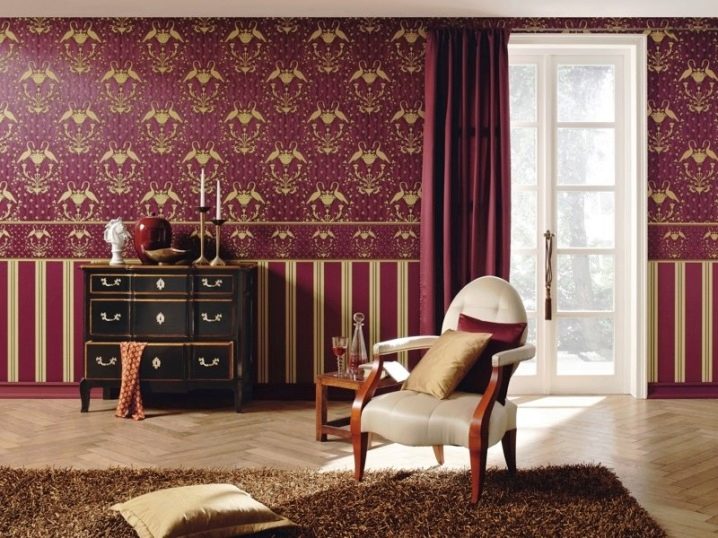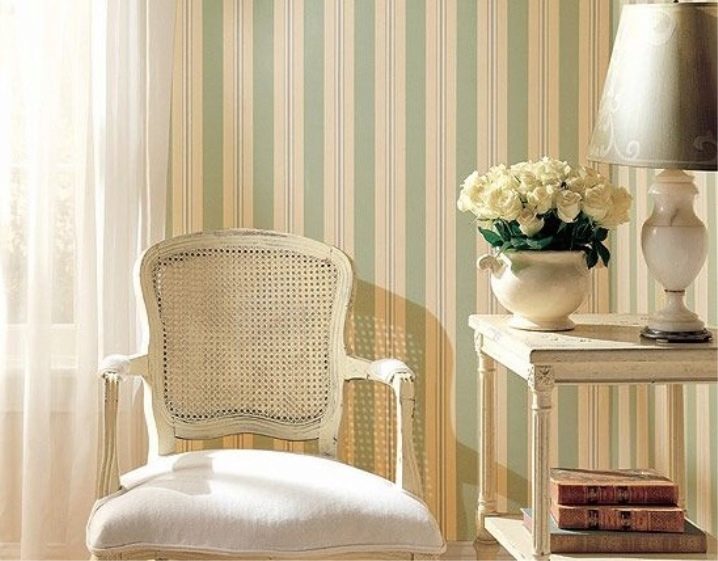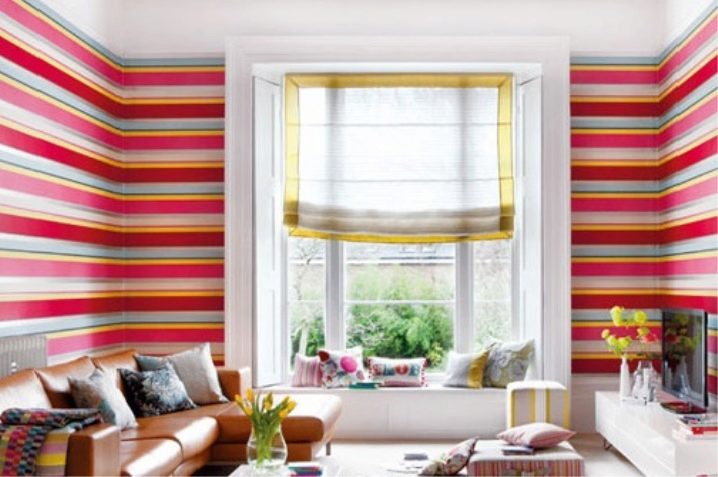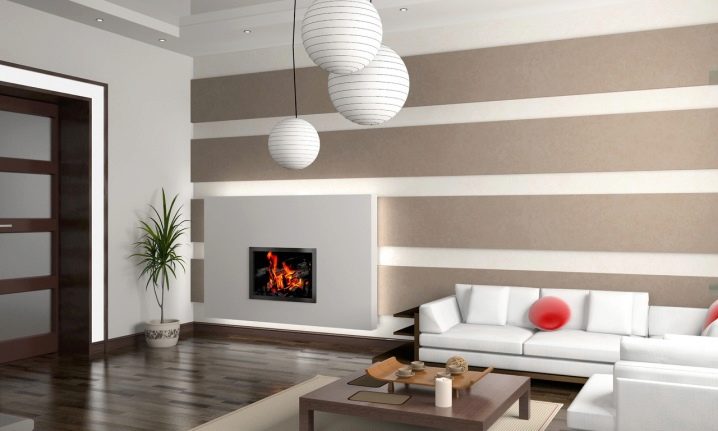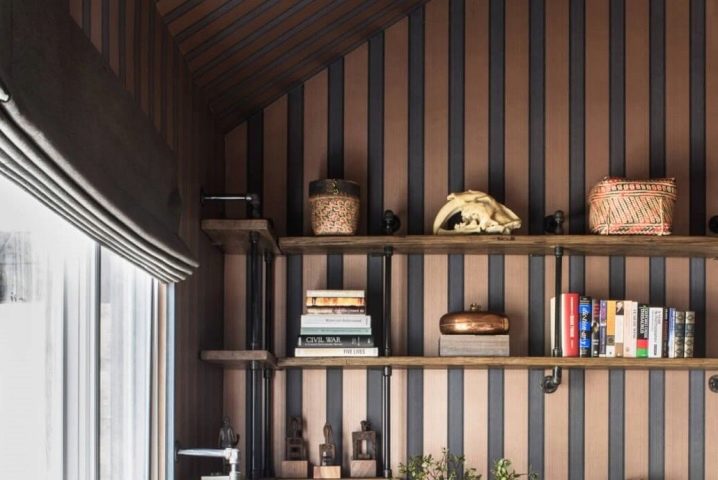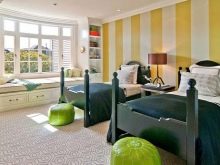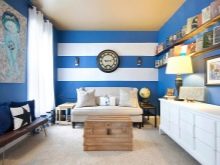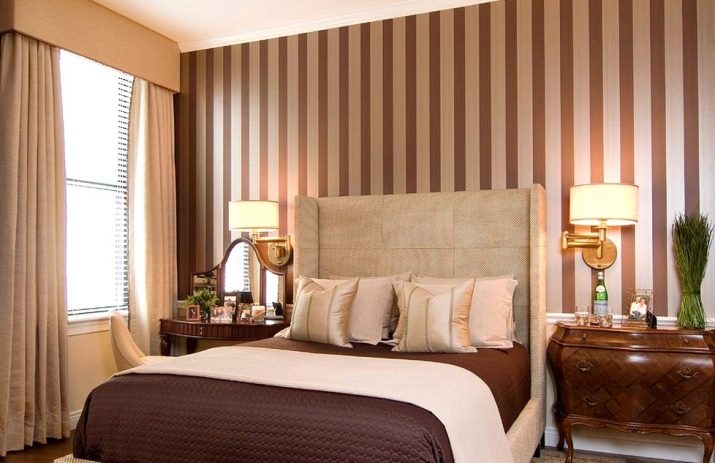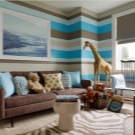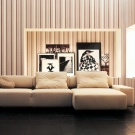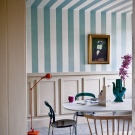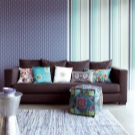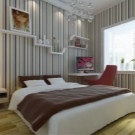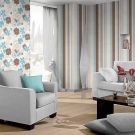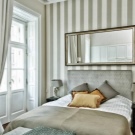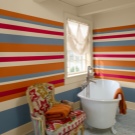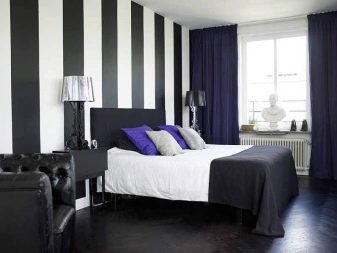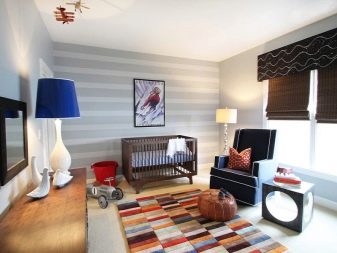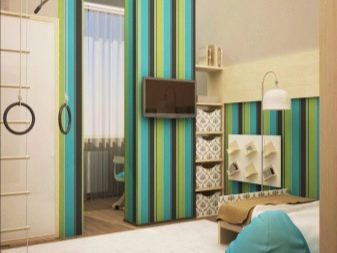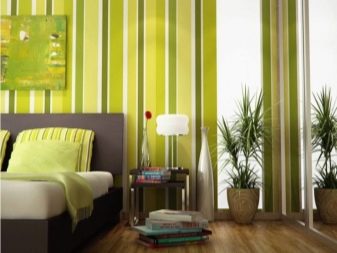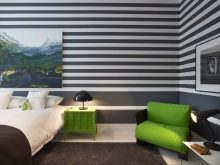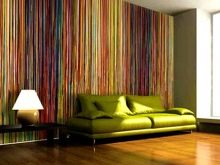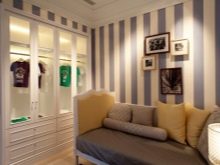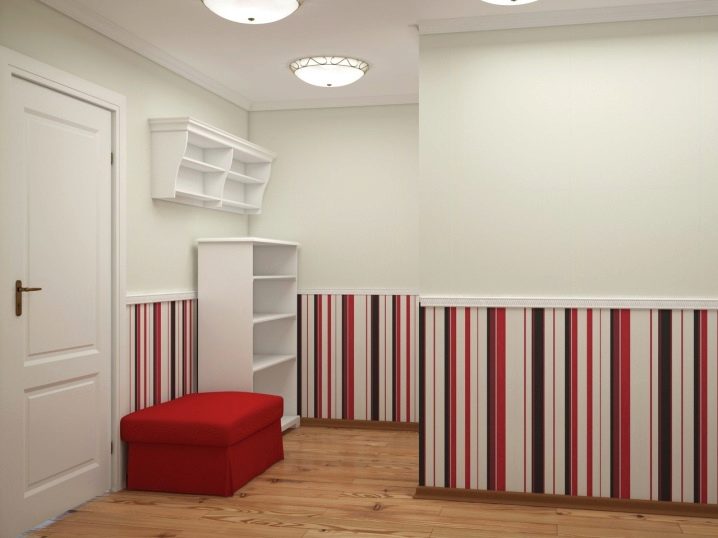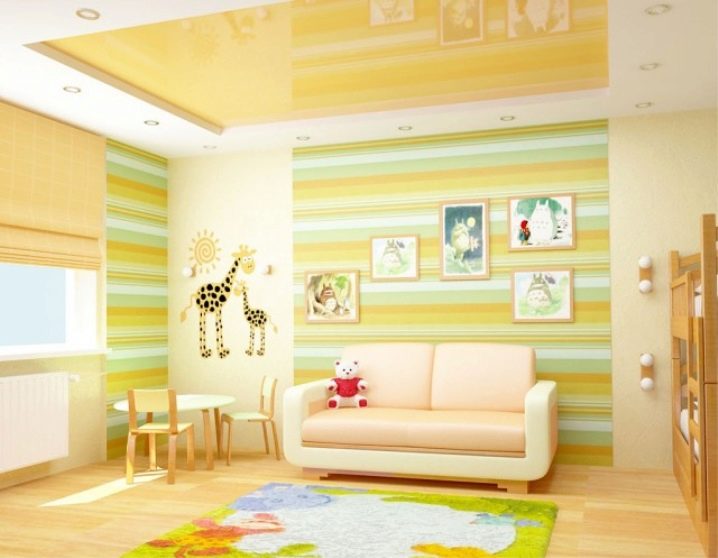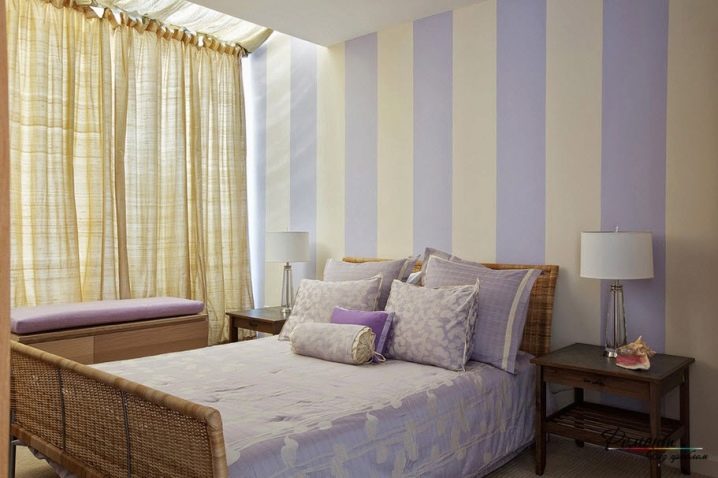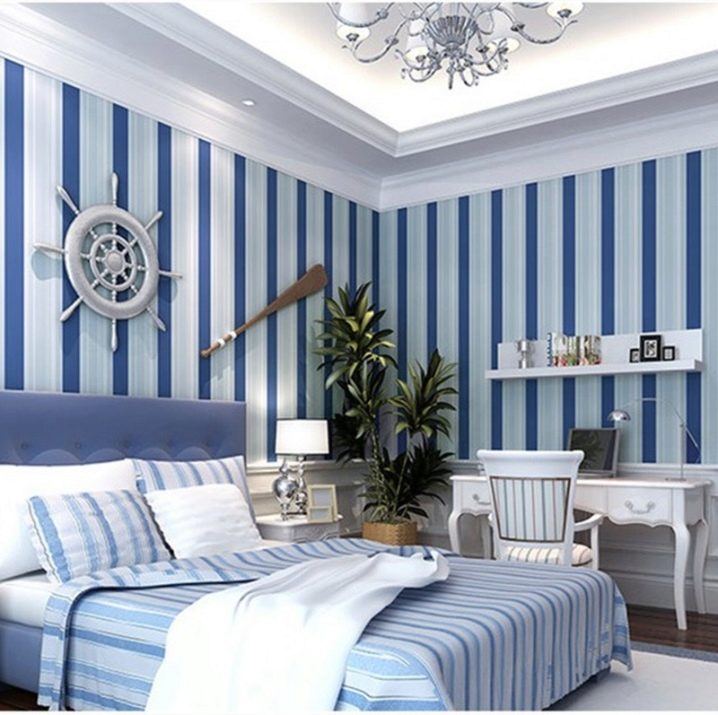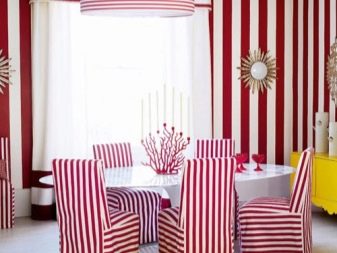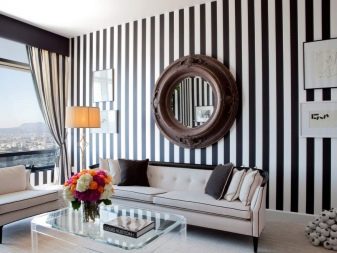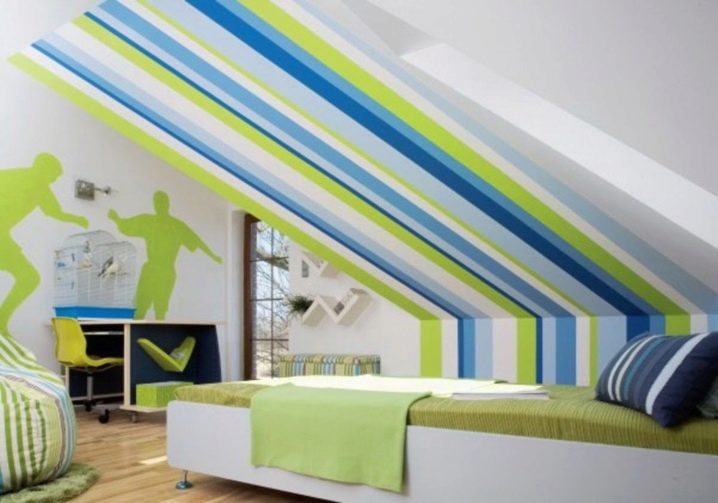Interiors of rooms with striped wallpaper
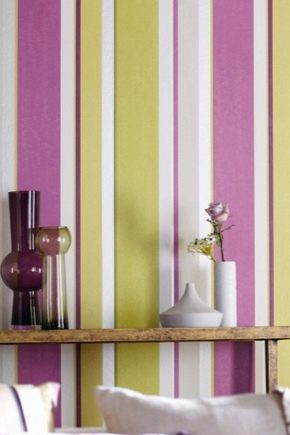
Wallpapers - the most common type of decoration of apartments and houses. They protect the walls, are a zoning tool and simply delight the eye with their appearance. In addition, they can visually make the room a little higher or wider. Striped wallpapers are well suited for this task.
Advantages and disadvantages
The advantages of such wallcoats include:
- Changing the visual perception of the room;
- Ability to pick to any style;
- A wide range of models and materials allow you to use them in any room;
- Perhaps a combination with other models;
- With their help, you can disguise uneven corners and walls;
- The presence of products in different price categories (from economy to premium) allows you to choose the option affordable.
There are some disadvantages:
- Difficulty sticking;
- Depending on the type of wallpaper, some of them have difficulty in cleaning, as well as differences in strength and resistance to external influences;
- Choosing a similar type of coverage, it is necessary to soberly assess the possibilities and parameters of the apartment, since it is possible to achieve the exact opposite effect.
Kinds
Wallpapers can be for walls and for the ceiling. They can be single-layer or consist of two or three layers. Naturally, as they increase, the strength of the coating increases, and properties, depending on the materials, improve.
By location relative to the floor, the drawing can be:
- vertical (the figure is located along the length of the canvas);
- horizontal (across the canvas);
- diagonal.
The most common is a wallpaper with a vertical pattern. They can be glued and horizontally to the floor. At the same time there are certain difficulties in comparison with the traditional, vertical method of gluing.
However, if we consider that the location of the lanes affects how the room will look, this drawback does not seem to be significant.
Bands can be:
- wide;
- narrow;
- filiform.
Combined wallpaper is common - when there are stripes of different sizes on the canvas. For example, narrow ones can serve as a border for a wide band or be at some distance, but still vary in size. It should be remembered that the sequence is usually repeated with a certain step, so this should be taken into account when distributing the print on the surface.
Materials
Depending on the material of manufacture, the following types of wallpaper are distinguished:
- Paper - the most affordable and therefore the most popular. Another advantage is environmental friendliness, as they are made from natural cellulose. Such material is porous, condensate does not accumulate under it and, therefore, there is no mold and fungus. They are less durable, do not withstand changes in temperature and humidity, cleaning them is almost impossible.
- Vinyl - The basis can be both paper and non-woven. With the help of vinyl, you can create original models of wallpaper.Such material is very strong and durable, it can be washed with a sponge or brush, and even painted if the need arises.
- Flizelinovye made from natural and synthetic raw materials. For example, cellulose and polyester. Due to this, they are biodegradable (and therefore environmentally friendly), but at the same time durable. They are also distinguished by ease of installation. Because of this, they are used as the basis for vinyl wallpaper - no need to spend time waiting for the glue to be absorbed into the canvas.
- Textile - the same non-woven fabric or paper acts as a base, and the top layer can be jute, silk, velor or felt. This is one of the most expensive options.
- Fiberglass - used very rarely due to the high cost. Produced from natural materials, flame retardant, waterproof.
- Metallized - the most expensive. Consist of paper and a thin layer of aluminum. Reliable, protect from electromagnetic radiation, retain heat, but they require special glue.
Textures
Wallpaper can be:
- with a smooth surface;
- embossed.
Paper wallpapers acquire their relief by imposing a special layer through stencils.In two-layer wallpaper embossing affects only the top layer.
The embossing structure on vinyl is achieved in two ways:
- using deposited vinyl (imitation of shadows and properly selected shades together with a large relief give a three-dimensional effect);
- by hot stamping technology.
The result is:
- compact vinyl (with imitation of natural materials);
- silk-screen printing (the most popular, allow you to create shiny surfaces).
In non-woven wallpaper texture is formed by embossing under the influence of high temperatures (can resemble textiles by touch). With regards to the bands themselves - they can be highlighted completely or only their borders, as well as decorative patterns inside them. Similar types of masks small defects well. This does not apply to shiny surfaces - on the contrary, they emphasize even the smallest ones.
The textured pattern, namely its shadow, makes the lines clearer, so the effect of changing room parameters also increases. To increase it even more, the pattern should be narrow and frequent.
Dimensions
Russian manufacturers produce wallpapers rolled up in rolls wide:
- 53 cm (traditional version);
- 106 cm (more modern).
The standard length is 10.05 meters (5 cm remains for error in one direction or another). The length may be more - for example, for wallpaper for painting. Foreign manufacturers produce products with a width of 70 cm. Other non-standard parameters are supplied from Europe, but they are quite rare.
The main difference between meter and half meter rolls is in the ease of pasting. Even a novice can cope with meter non-woven wallpapers - they do not break, the process itself is fast enough due to the larger surface area of the canvas, the glue is applied directly to the canvas and there is no need to wait for it to be absorbed. In addition, when gluing wide wallpapers, less joints are obtained, which means that less inaccuracies can arise.
Colors
Depending on the color scheme wallpaper with stripes can be divided into:
- stripes of the same or different colors on a neutral background (for example, white with blue stripes);
- multi-colored, located close to each other.
If there are several colors, you need to correctly relate them. To do this, you can rely on the innate taste, or, if in doubt, use special tables.
Color combinations can be:
- Achromatic - gray, black and white.
- Monochromatic (related) - for example, green, lime, olive, yellow, brown.
- Complimentary (contrasting) - orange and blue, yellow and purple, etc.
Styles
A distinctive feature of all classical styles is the impression of luxury, sometimes even the pretentiousness of furniture and decorative carved arches, columns, balustrades. While the background of this rich decoration remains restrained. This pattern can be traced in the following directions:
- Baroque - mainly used for palaces and mansions, striking in their grandeur. The main ones were natural wood, textured coating with gold and silver.
- Rococo - style, applicable not only to large, but also small areas. Light wall coverings reflect light better and appear wider. Pastel pink, blue tones with gold patination emphasize the elegance and fancy shapes of the furniture.
- Classicism more restrained geometrical forms are inherent, the clear lines of which were repeated on the walls.
- In art deco brighter colors began to appear — burgundy, red, blue, green, combined with floral and floral patterns.
- Modern can be called neoclassical, it has kept the smooth lines of the classics, which look more advantageous against the background of straight bands. They, in turn, have become smaller and more colorful.
- It is the color variety that has become the hallmark of modern trends. Eclecticism - a vivid example of such a riot of colors.
- For conservatives who succumb to fashionable trends, suitable minimalism with its monochrome and low-key details.
- So popular in our time style loft You can also beat the stripes of the corresponding palette.
How to combine?
The main goal when working with striped wallpaper is to achieve a combination of dissimilar and even sometimes opposite elements of the interior.
To achieve harmony in this difficult matter, you must follow certain rules:
- It is no secret that with the help of one or another pattern on the walls, as well as the division of a room into sectors or parts, it is possible to "push apart" the boundaries of the living space. In this case, the more contrast the pattern, the better it will be seen.
- Narrow frequent bands can serve as an excellent substitute for a monochromatic background.
- The following rule follows from the preceding one: against the background of bright colored lines, decorative objects and other furnishings are lost. Accordingly, the furniture is better to choose the appropriate soothing colors.However, if you are the owner of a unique hand-painted chest of drawers - this option will not work.
- Wide stripes of restrained colors will give solidity to the interior.
- A thin, multi-colored print will help to emphasize individuality, to show the originality of creative nature.
- An atmosphere of comfort will create pastel shades or colors that have a relaxing effect on the organs of vision and nervous system.
Subtleties of application
With the help of strips on the wallpaper can not be allocated the whole room, and some part of it. To design the rest of the space, one of the primary colors of the stripes or the background tone is taken. In combination with other zoning techniques, this move can be very effective.
Vertical drawings are ideal for all apartments in which the height from floor to ceiling is less than 2.5 meters. They literally pull the room up. And the narrower the bands, the more this effect will manifest. The ceiling in this case, you should choose a monochromatic, bright, matte. The interior of this kind will be appropriate in the "Khrushchev" and other modest in size apartments.
Cross strips create the exact opposite feeling.The room is drawn out, creating the illusion of increasing space. So it is better to design only one wall or two opposite ones, since the design of all surfaces with continuous horizontal lines will create an unpleasant optical illusion. At the same time, the height of the room will seem less. This option is ideal for "Stalinok" and other similar buildings.
Diagonal, inclined and zigzag lines can seriously modify the room, while they can expand the area without affecting the height. In order for these and other optical effects to work, precision is necessary when gluing. It would not be superfluous to take a small margin for fit and other unforeseen situations.
The coincidence of the pattern and its position depends largely on the flatness of the walls. Therefore, it is necessary to make sure of this and, if necessary, to make the surfaces more even, and their corner joints straight.
Beautiful walls in the interior
A drawing of this kind can decorate the design of any room in an apartment, be it a kitchen, a hall, or a lounge.
Strips will be appropriate in the hallway, they can be combined with other types of wallpaper or even with painted surfaces.
Frequent multi-colored stripes will decorate any nursery, and selected in a certain color scheme, they will become an interesting option for dividing a room for several children of different ages. The main thing is to keep something common between the zones, and in this case it is the width and frequency of the bands.
And so that the child was not depressed by the size of his room, it is better to use the horizontal version.
For a bedroom, calmer options will help you to relax after a hard day’s work.
Maritime themes will remind you of pleasant moments and create a special mood.
Dining room, especially if it is combined with the living room, should look spectacular. Bright contrast will not leave your guests indifferent.
You can declare your active life position using wallpaper not only on the floor, but also on the ceiling.
About what the interiors of rooms with wallpaper in a strip, see the following video.
